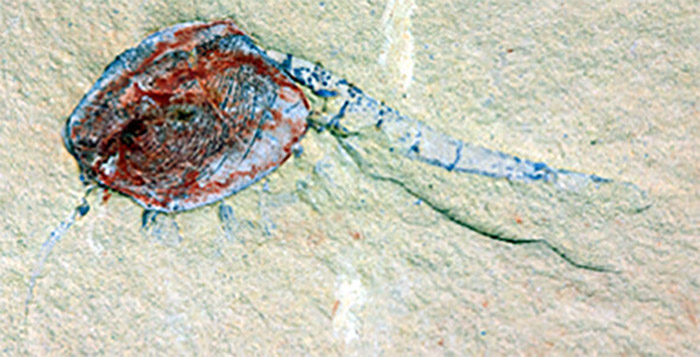Primeval breeding ground: In Haiyan, China, researchers have discovered the fossilized nursery of some of the earliest animals in the history of the earth – it dates back to 518 million years ago. The large number of young animals of early animal forms in the fossil deposit gives for the first time an insight into how these ancestors of all modern animal phyla grew up. At the same time, the findings suggest that even the Cambrian fauna sought special habitats for their reproduction.
In the Cambrian a good 540 to 480 million years ago, the ancestors of almost all animal phyla that populate water and land today came into being. Early multicellular cells from that time first developed crucial components of the basic animal blueprint – from the head and brain to the heart to the intestine. The predatory way of life or behavior patterns such as brood care probably emerged during this era. Until now, little was known about where and how these early animals developed from juvenile to adult.
Oldest and most diverse fossil deposit
A team led by Xianfeng Yang from Yunnan University in China has now discovered an extraordinary fossil deposit that could provide more information. At the Haiyan excavation site near the East China Sea, they discovered a layer of fossils of early animal forms. Many specimens are so well preserved that even soft tissues are visible. “The site has preserved details like three-dimensional eyes – features that have never been seen before, especially in such early deposits,” says co-author Sara Kimmig of Pennsylvania State University.
The researchers dated the fossils to be around 518 million years old. Of the 2,846 specimens found, Yang and colleagues identified 118 species from 14 different animal phyla, including 17 new species. This makes this deposit the oldest and most diverse that has been found so far. Among other things, they discovered various early representatives of the rib jellyfish, priap worms, sponges and arthropods as well as hemichordates and chordates – the ancestors of the later vertebrates.
Notes on paleo nursery
Particularly exciting for the paleontologists: Almost half of the newly discovered fossils do not come from adult animals, but are in adolescence. Even the eggs of some early crustaceans are preserved in the fossil ensemble. “It’s amazing to see all of these pups in the fossil record,” says co-author Julien Kimmig of Pennsylvania State University. “Juvenile fossils are something we rarely see, especially from soft-bodied invertebrates.”
For the first time, the finds provide insights into the development of these early animal forms from young to adult. It may be the oldest “nursery” of the primeval marine animals that has been discovered to date. “It is well known that many marine animals do not choose the place to lay their eggs and raise their offspring by chance, but rather that they prefer certain habitats for the young animals, which are often different from those of their adult conspecifics,” explain the researchers.
The high proportion of larvae and juveniles in the Haiyan deposit could indicate that such breeding grounds existed more than 500 million years ago. It would be conceivable that the corresponding point offered particularly good protection against predators and excessive ocean currents.
Rapid change in environmental conditions?
“The paleo-nursery hypothesis is a plausible explanation for the diversity and abundance of the juveniles found in the Haiyan deposit,” the authors write. At the same time, however, they suggest an alternative interpretation: “It could also have been a place where habitable and inhospitable conditions changed quickly,” they explain.
“In such an environment, it is possible that some specimens have got there and reproduced, which explains the large number of larvae, juveniles and subadults. Rapid environmental changes then led to the death of the specimens before the population could reach a stable state, ”said the paleontologists. This hypothesis is supported by the fact that the deposit contains several layers of sediment, each of which represents a spillage event. The lowest layer contains the greatest biodiversity.
Unique insight
“In any case, the Haiyan deposit offers a unique glimpse into the Cambrian and a rare opportunity to study and understand the upbringing of early soft-bodied animals, the possible origins of metamorphosis, and regional and local influences on growth,” said Yang and his colleagues.
Julien Kimmig adds: “We will see how different parts of the body have grown over time, which we do not currently know for most of these groups. And these fossils will give us more information about their relationships with modern animals. We shall see whether the development of these animals today is similar to that of 500 million years ago, or whether something has changed over time. ”(Nature Ecology and Evolution, 2021, doi: 10.1038 / s41559-021-01490-4)
Those: Pennsylvania State University
–

:quality(80)/cdn-kiosk-api.telegraaf.nl/7559b4fa-d8b1-11eb-8b24-0217670beecd.jpg)
